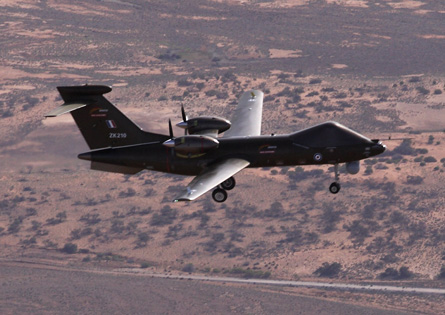BAE Systems has conducted the first few flights of its Mantis unmanned air vehicle under a technology demonstration effort jointly funded by the UK Ministry of Defence.
Performed at the Woomera test range in South Australia, the flights have seen the fully autonomous design "successfully complete a series of trials demonstrating the capability of the system and the potential of large unmanned systems to support future UK operational needs", says BAE.
The work has also "helped build confidence in the feasibility of a UK-derived medium-altitude, long-endurance unmanned aerial system," says Air Vice Marshal Simon Bollom, director combat air for the MoD's Defence Equipment & Support organisation.
 |
|---|
© BAE Systems |
Mantis had originally been expected to fly early this year, but BAE says the milestone still took place within 19 months of concept work. "This achievement is testament to the can-do approach of the whole team working on this programme," says Chris Allam, managing director of the company's autonomous systems and future capability business.
The Mantis programme also involves companies including GE Aviation, Meggitt, Qinetiq, Rolls-Royce and Selex Galileo.
Powered by two turboprop engines, the all-electric Mantis air vehicle has a 20m (65ft) wingspan. The current "Spiral 1" design was unveiled at the 2008 Farnborough air show as a UK alternative to designs such as the US General Atomics MQ-9 Predator B/Reaper. The domestic system is intended to carry a variety of advanced sensors and precision-guided air-to-surface weapons.
BAE says a production version of Mantis would have a maximum take-off weight of about 9t, operate at altitudes up to 55,000ft (16,780m) and perform missions including intelligence, surveillance, target acquisition and reconnaissance, plus close air support for ground forces.
Source: Flight Daily News























